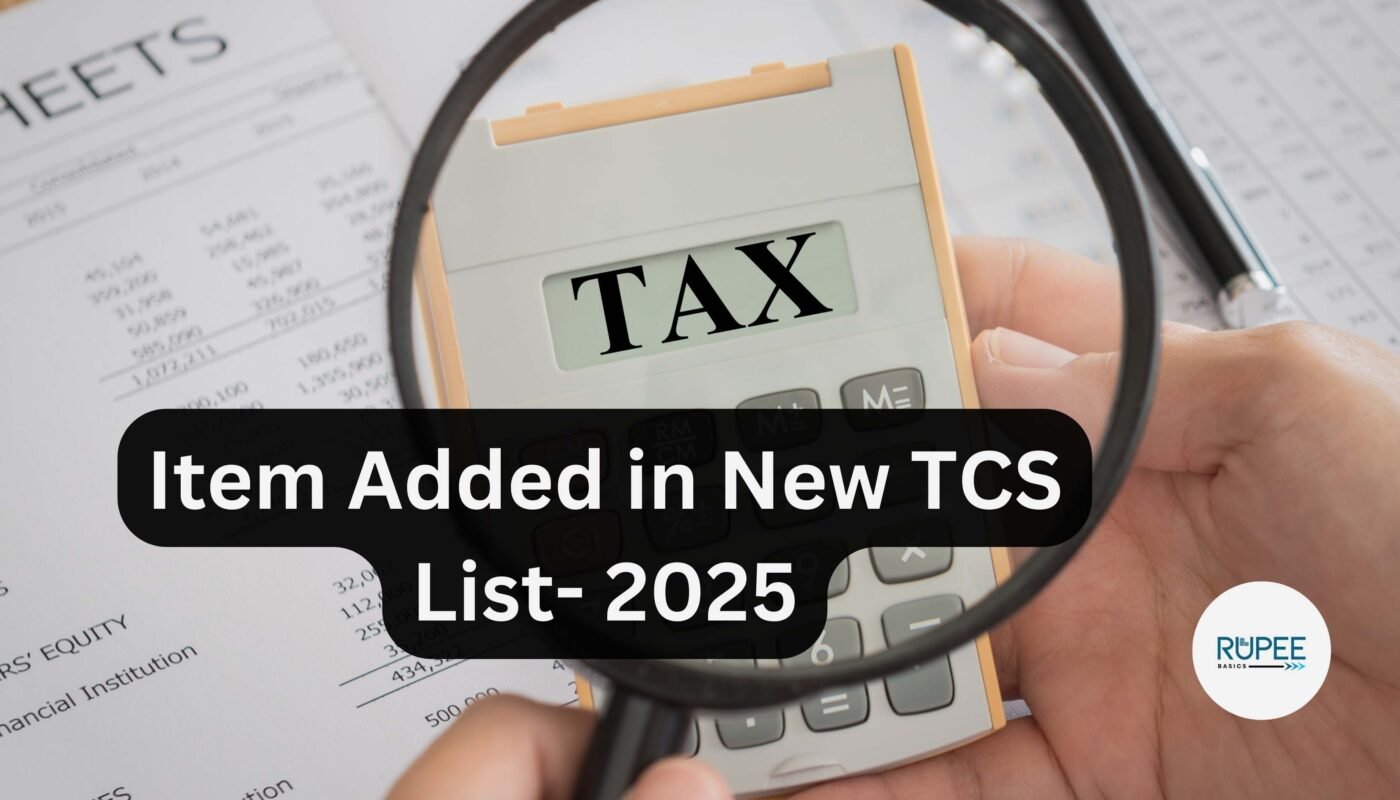CBDT Notifies 10 New Items on Which TCS Needs to Be Collected
The Central Board of Direct Taxes (CBDT) has recently expanded the scope of Tax Collected at Source (TCS) by including 10 new luxury items. This move aims to enhance tax compliance and bring high-value transactions under the tax net.
Understanding TCS (Tax Collected at Source)
Tax Collected at Source (TCS) is a tax that sellers collect from buyers at the time of sale. The seller then remits this tax to the government. It’s applicable to specific goods and services as notified by the government.
🆕 New TCS Applicability on Luxury Items
Effective from April 22, 2025, the CBDT has mandated a 1% TCS on the sale of certain luxury goods exceeding ₹10 lakh. This is in accordance with the provisions of the Income Tax Act. The seller must have to collect TCS @ 1% from the buyer and will deposit the same with government.
List of 10 New Items Under TCS Notification:
- Luxury Watches (any wrist watch)
- Designer Handbags (any bag such as handbag, purse)
- High-End Footwear (any pair of shoes)
- Premium Sportswear (any sportswear and equipment such as golf kit, ski-wear)
- Any collectibles such as coin, stamp
- High-End Electronics (Any home theatre system)
- Any horse for horse racing in race clubs and horse for polo
- Art Pieces and Antiques (any art piece such as antiques, painting, sculpture)
- Any pair of sunglasses
- Private Jets and Yachts (any yacht, rowing boat, canoe, helicopter)
You can download detailed notification from the bottom of this article.
Example: How TCS Applies
Imagine purchasing a luxury watch priced at ₹12 lakh:
- Purchase Price: ₹12,00,000
- TCS @1%: ₹12,000
- Total Amount Payable: ₹12,12,000 by the Buyer
The seller collects ₹12,000 as TCS and deposits it with the government. You need to submit your PAN to the seller. This TCS amount will reflects in your Form 26AS and can be claimed as a credit while filing your Income Tax Return (ITR).
Impact on Buyers and Sellers
🛍️ For Buyers:
- Increased Upfront Cost: The total payable amount includes the TCS.
- Tax Credit: TCS paid can be claimed as a credit in your ITR.
- PAN Requirement: Ensure your PAN is provided to the seller for accurate reporting.
🏷️ For Sellers:
- TCS Collection: Mandatory collection of TCS on specified luxury items exceeding ₹10 lakh.
- Timely Deposit: TCS collected must be deposited with the government within the stipulated time.
- Filing Returns: Regular filing of TCS returns is essential to maintain compliance.
Why Has CBDT Introduced These Changes?
- To widen the tax base.
- To monitor high-value luxury purchases.
- To discourage undisclosed income and black money.
- To enhance transparency and digital compliance.
Key Points to Remember
- Effective Date: April 22, 2025.
- TCS Rate: 1% on specified luxury items exceeding ₹10 lakh.
- Compliance: Both buyers and sellers need to ensure adherence to the new provisions.
❓ Frequently Asked Questions (FAQs)
Q1: Is TCS an additional tax burden?
A1: No, TCS is not an additional tax. It can be claimed as a credit while filing your Income Tax Return. This is just like a advance tax deposited by other from your behalf.
Q2: What happens if the seller doesn’t collect TCS?
A2: Non-compliance can lead to penalties for the seller. It’s essential for sellers to adhere to the TCS provisions.
Q3: Do I need to pay TCS on multiple purchases totaling over ₹10 lakh?
A3: TCS applies to individual transactions exceeding ₹10 lakh. However, it’s advisable to consult with a tax professional for specific scenarios.
Q4: How can I claim the TCS amount?
A4: The TCS amount will reflect in your Form 26AS. You can claim it as a credit while filing your Income Tax Return.
📝 Conclusion
The CBDT’s inclusion of 10 new luxury items under the TCS regime is a strategic move to enhance tax compliance and monitor high-value transactions. Both buyers and sellers must familiarize themselves with these changes to ensure smooth transactions and avoid potential penalties.
For more detailed information, refer to the official CBDT notification.




